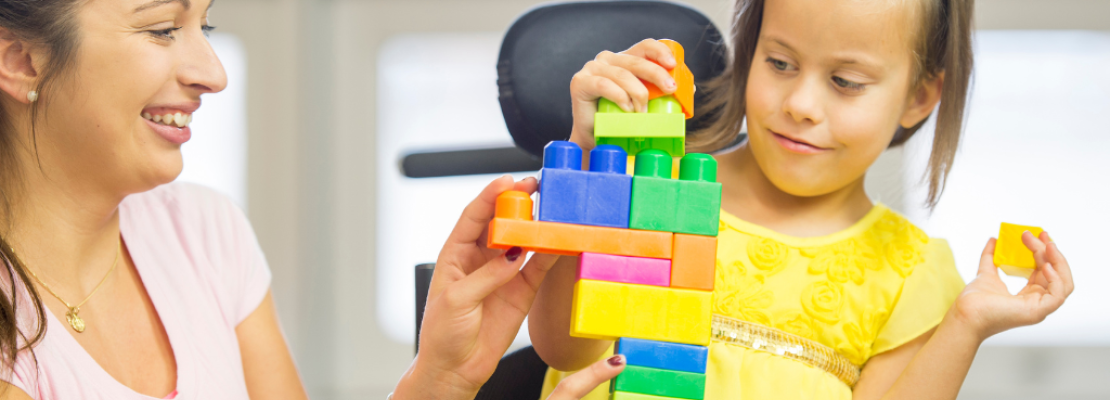Children’s toys have a long history of being gendered in the way they are packaged, marketed, and offered to young children. Science, technology, engineering, and mathematics (STEM) toys are no exception, with many STEM products being heavily marketed to boys over the years. Research conducted by the LEGO Group and the Geena Davis Institute on Gender in Media in 2021 indicated that parents still more frequently encourage sons to do STEM activities, including using STEM-themed toys, than daughters. This may subtly reinforce stereotypes about who can pursue STEM, and girls may also be missing out on important early learning experiences.
The good news is that parents, caregivers, and early educators have the power to help dispel STEM stereotypes! When it comes to play, the first step is simply to equally encourage STEM toys and experiences to all young children, regardless of gender. Not sure where to start? NGCP is here to help with a simple list of six types of STEM toys that will delight, engage, and inspire young girls – and all young children – in STEM play.
P.S. - While this list is focused on breaking STEM stereotypes, adults can also counter other gender stereotypes by encouraging boys – and all young children – to explore dress-up, doll play, and more!
1. Spatial Reasoning Toys – Spatial reasoning refers to the ability to imagine and manipulate three-dimensional shapes in your mind. Of course, these skills can give your child a leg up in math class, but they are also important when doing “real world” things like reading a map, efficiently packing a suitcase, or playing certain video games (think: Tetris). Encourage spatial reasoning from a young age with toys like tangrams, puzzles, blocks, and more! For activity ideas that don’t require new toys, check out this PBS Kids resource on simple activities to help children develop their spatial sense.
2. Building and Construction Toys – Encourage girls to explore toys that allow them to build, tinker, explore, and construct. Construction toys are a great choice for young children because they help foster hand-eye coordination and fine motor skills. Building bricks like LEGO (or Duplo for younger toddlers), classic wooden blocks, gears, and magnetic tiles are all great choices. GoldieBlox also offers a range of building kits that encourage girls to explore STEM along with arts, crafts, and more. Learn more about building skills through construction toys in this Genius of Play resource.
3. Science Kits – From botany to chemistry, there are so many amazing science experiment kits out there for children! The best science kits are ones that encourage children to think like a scientist by making hypotheses and engaging in hands-on experimentation. Check out this great list of kits for specific examples: The Best Science Kit for Kids to Explore and Experiment. Tools like microscopes, magnifying glasses, test tubes, pipettes, and other science materials that can be bought individually (not just in packaged kits) are also great materials to keep young scientists experimenting and exploring.
4. Coding Toys – Women remain highly underrepresented in computer science fields. Encouraging girls’ positive early exposure to coding and computer science is an important way to break stereotypes about these fields. Luckily, there are a growing list of toys, such as programmable screen-free robots, to encourage children to explore computer science concepts beginning in preschool (examples include the KIBO Robotics Kit, Coding Critters, KinderBot, Beebot, and more). Board games like Robot Turtles are another fun way to engage the whole family in practicing foundational coding skills.
For kids aged five and up, there are also a range of wonderful free apps that can be used to explore coding such as the free ScratchJr application. With ScratchJr, young children (ages 5-7) can program their own interactive stories and games. In the process, they learn to solve problems, design projects, and express themselves creatively on the computer.
5. STEM Dolls – Anyone who grew up with Barbies or Cabbage Patch dolls knows that dolls can be much more than toys. They can be best friends, confidants, and role models. Now, there are even dolls that can help break stereotypes and encourage girls in STEM! Surprise Powerz has launched with four dolls, Codie the Coder, Vera the Vet, Maria the Mathemagician, and Astro the Astronaut. These science, technology, engineering and mathematics-centric dolls are designed to break barriers and encourage problem solving, while reflecting the diversity and potential of girls today, all while having fun.
Right now, Surprise Powerz is partnering with NGCP on a joint mission to inspire and encourage girls in STEM. Through December 30, 2023, Surprise Powerz will donate 5% of doll sales to NGCP. Shop here!
6. Free and Recycled Materials – Last but not least, remember that some of the most creative and innovative STEM play can happen without any toys at all (or maybe just with the box the toy came in!). Encourage kids to build and tinker with open-ended arts, crafts, and recycled materials. Science experiments can happen with ingredients found in the kitchen. Children can use old cardboard boxes to create sculptures, pillows and blankets to design forts, and anything else their imaginations can dream up. Check out the picture books Dreaming Up: A Celebration of Building and Not a Box for even more inspiration for this type of play!
Want to learn even more about choosing toys to support early STEM play? Watch the recording of our NGCP webinar Choosing Toys to Inspire Young Girls in STEM with experts Dr. Emily Coyle (Associate Professor at Saint Martin’s University) and Kristel Bell (Founder and CEO of Surprise Powerz). Have fun playing and learning!
More Resources:
- NGCP Webinar: Choosing Toys to Inspire Young Girls in STEM
- NGCP Podcast: Inspiring Curiosity from Early Childhood to Break Gender Stereotypes
- Genius of Play and NGCP: Six Ways to Combat STEM Stereotypes through Play

